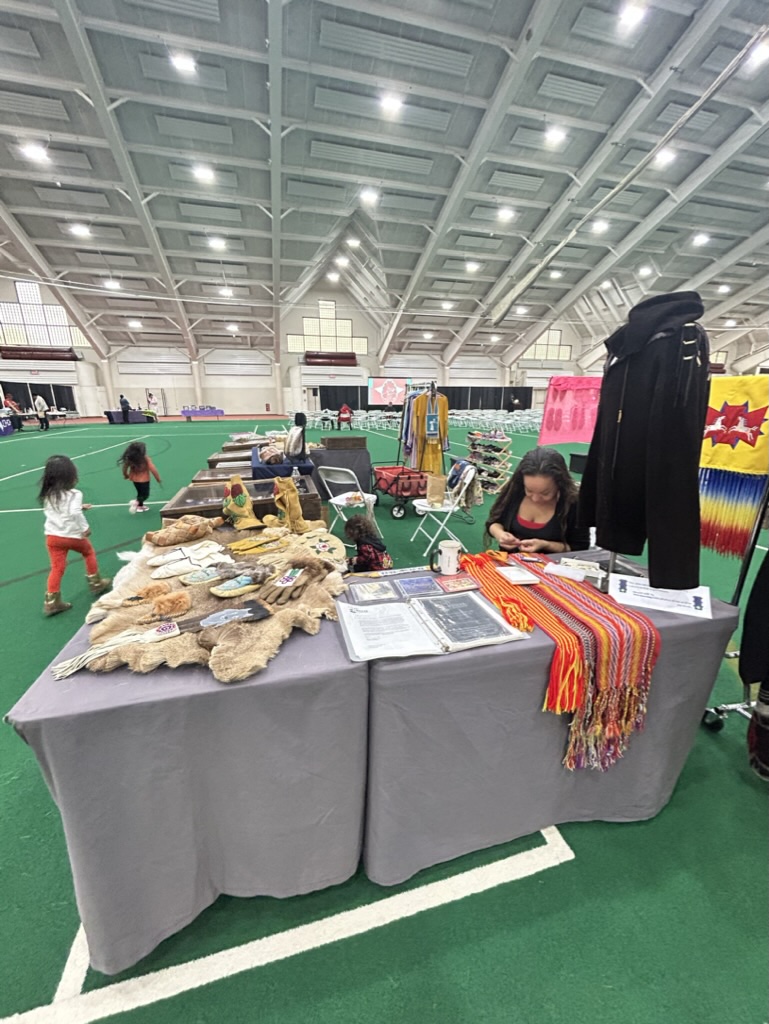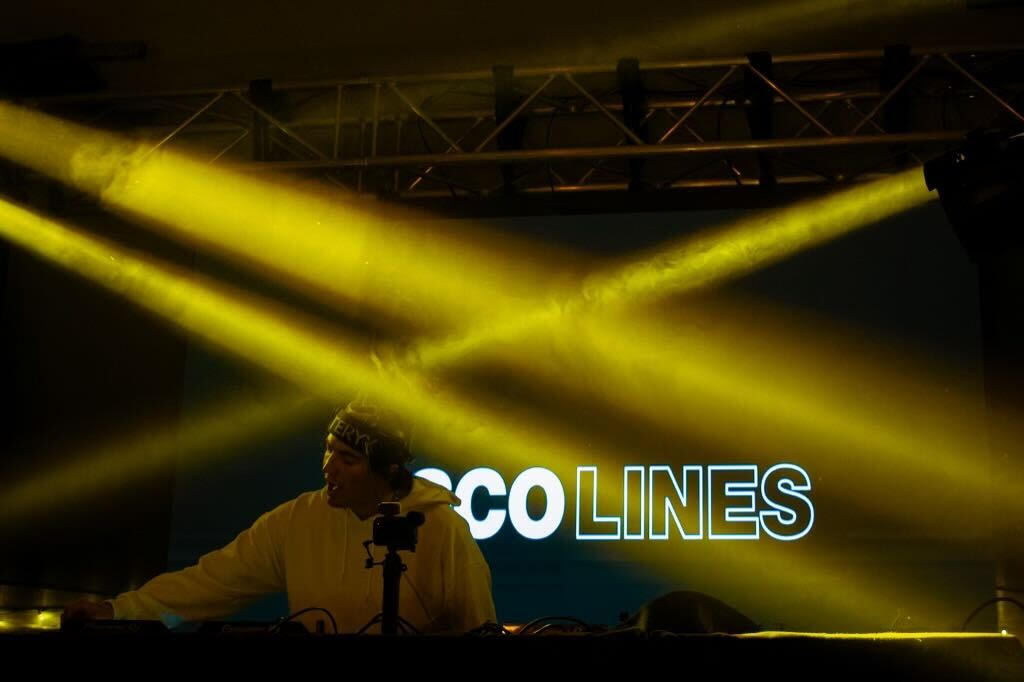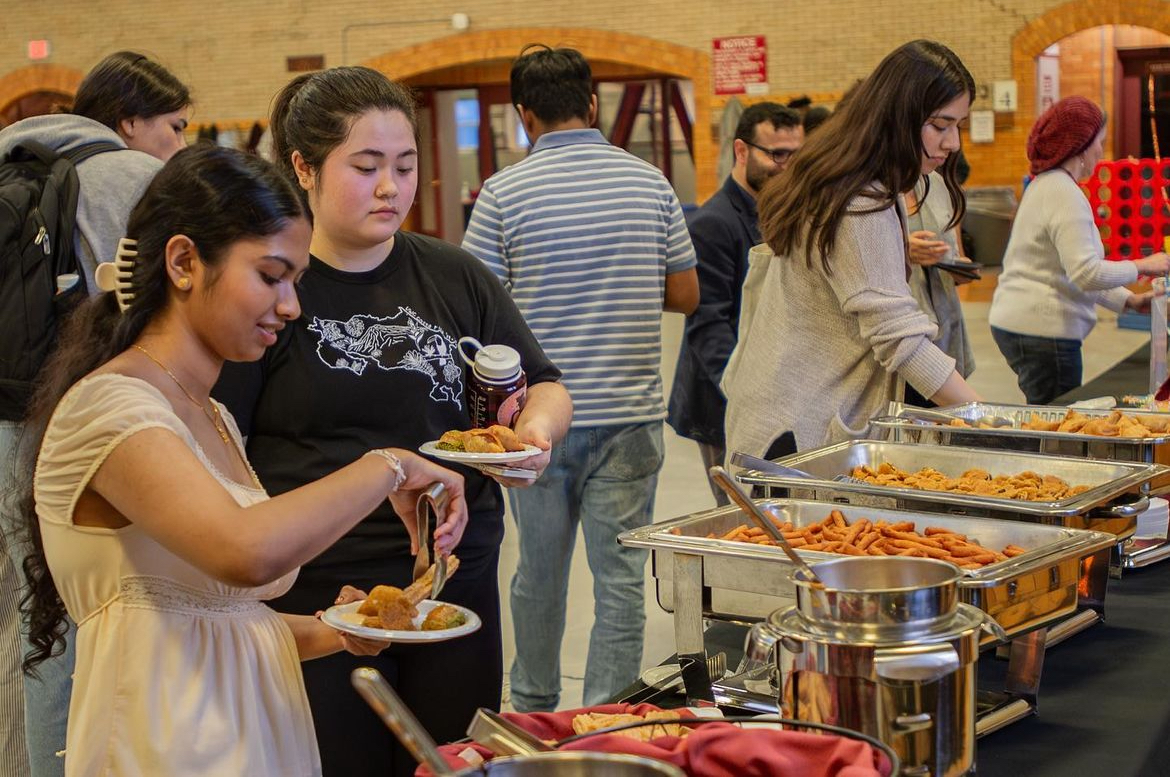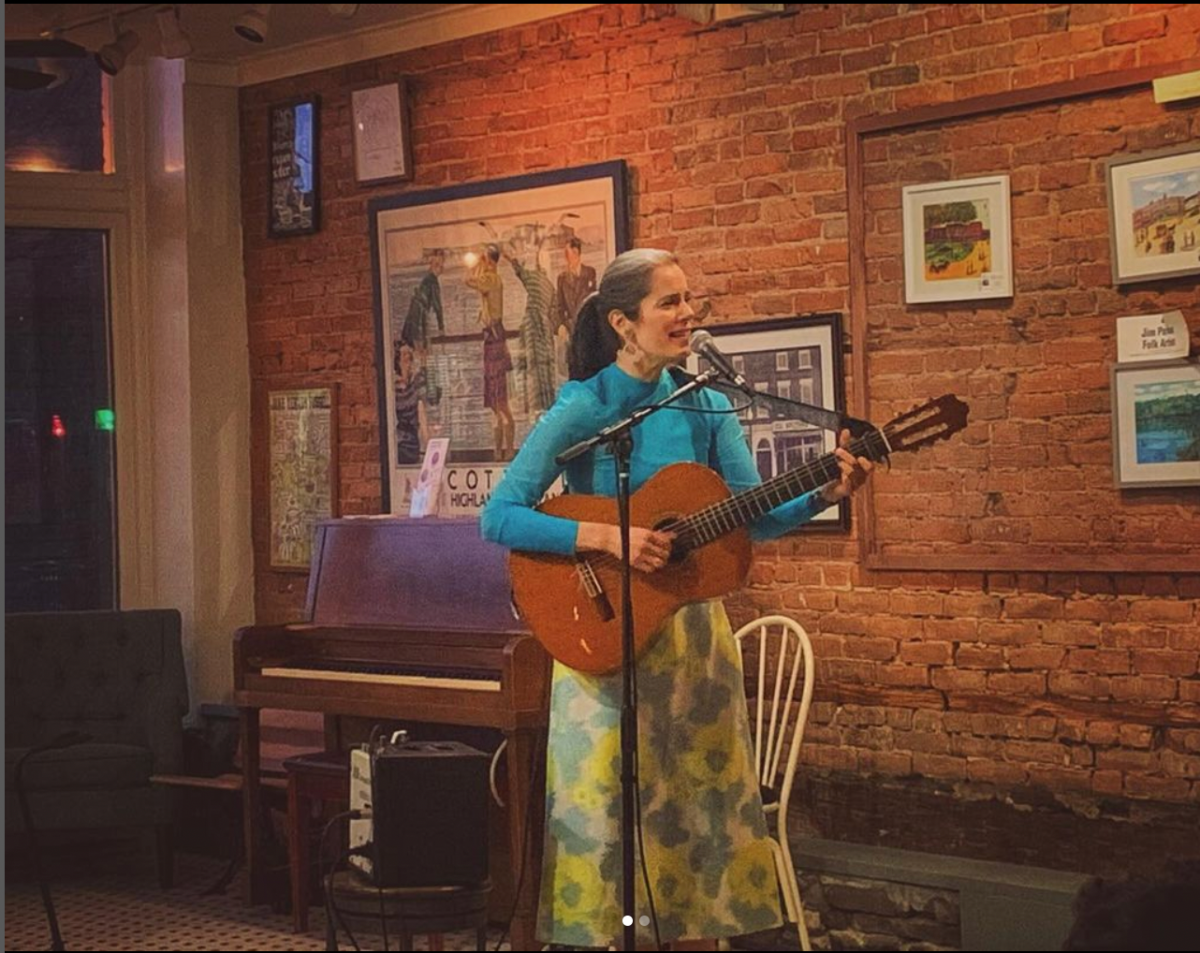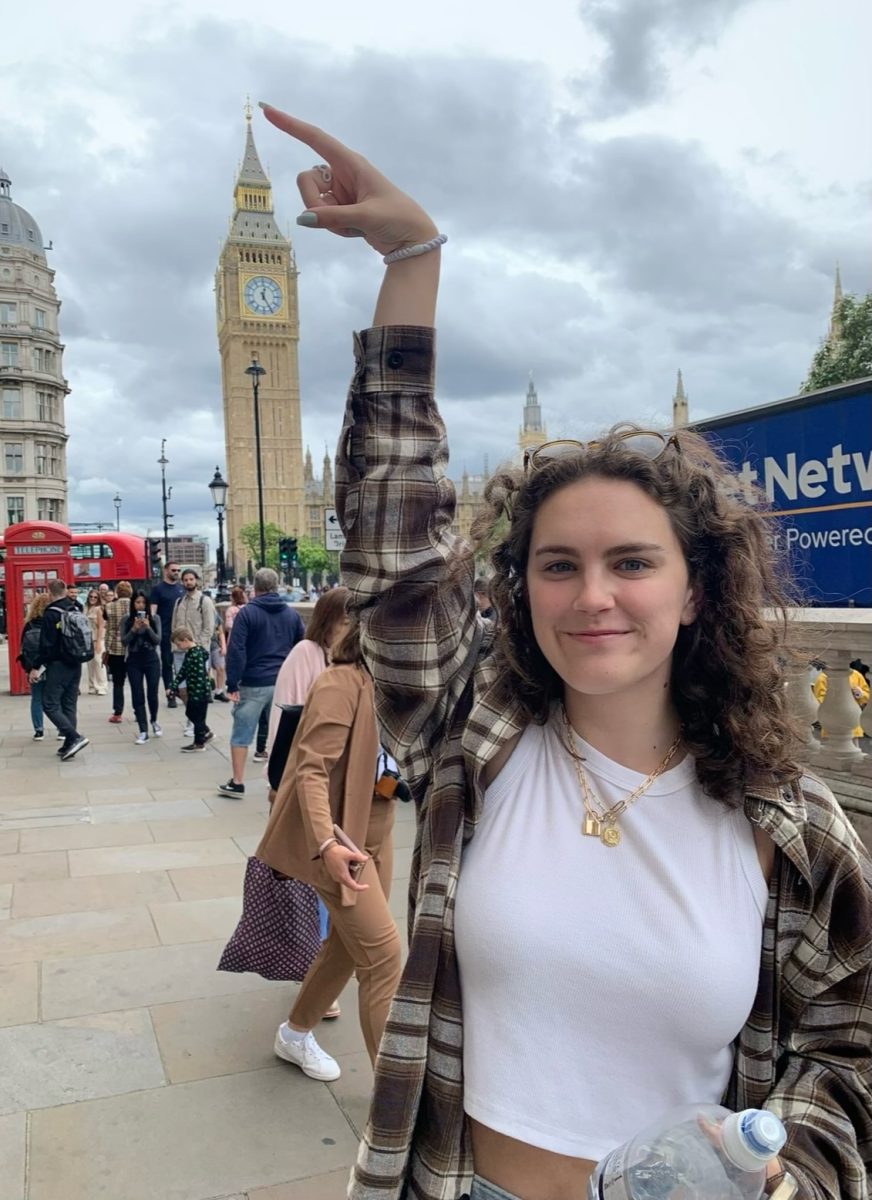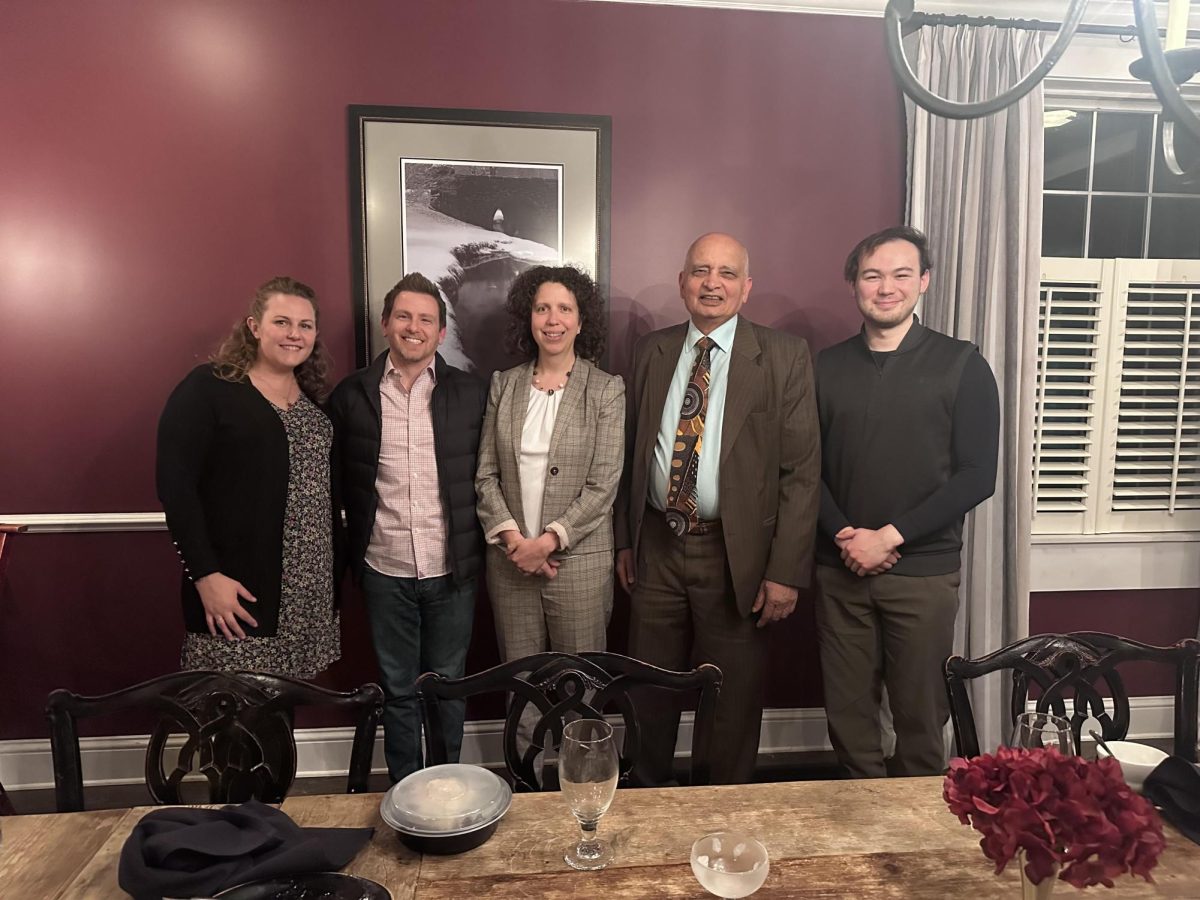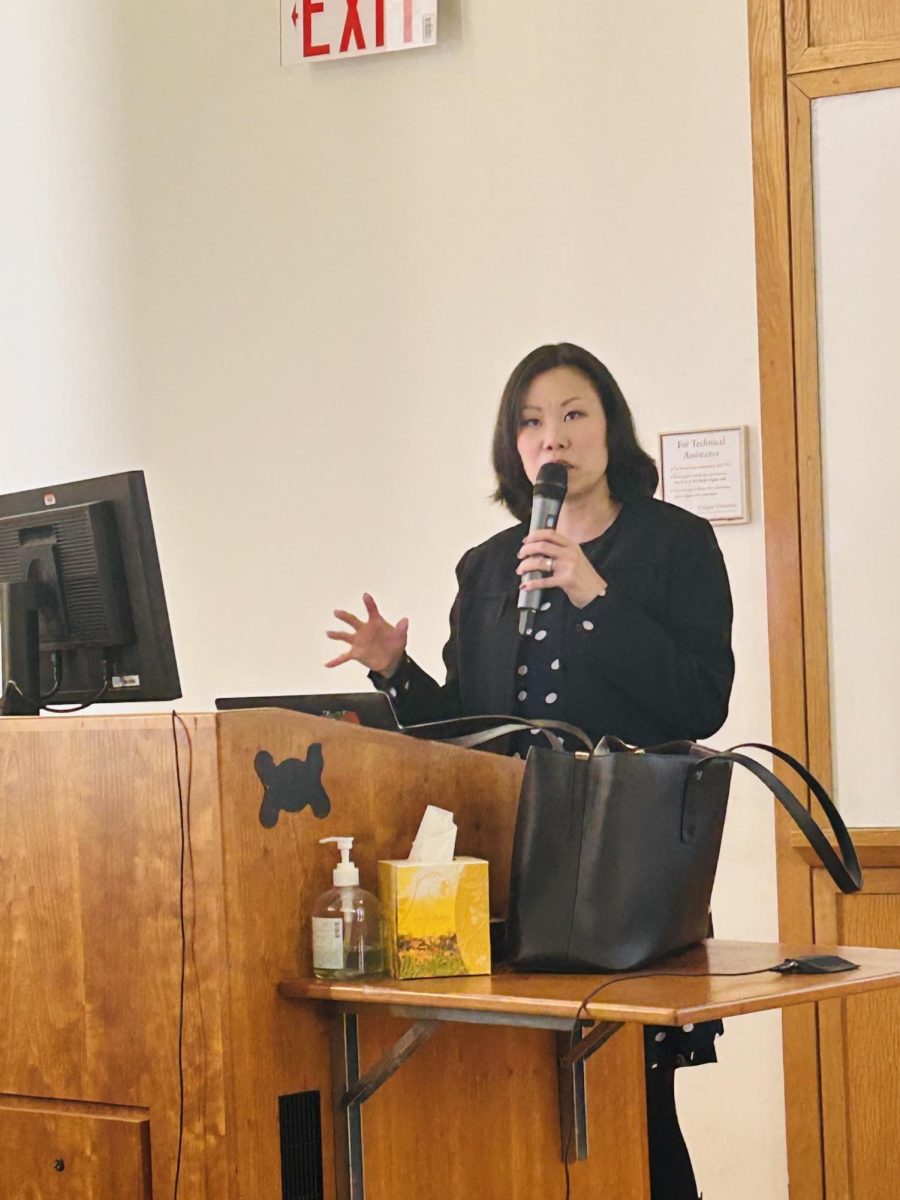The Colgate University Office of Equity and Diversity (OED) hosted the first annual Indigenous Nations Festival — a revisualization of the Native Americans Arts and Culture Festival — on Saturday, Oct. 21. The event ran from 9 a.m. to 5:30 p.m. in Sanford Field House, featuring a myriad of Indigenous art, cuisine, apparel and voices.
Vendors sold hand-sewn dresses, hand-painted prints, original photography, paintings, beaded pendants, herbal medicine, musical instruments, quill earrings and handbags while performers serenaded the crowd.
Through this event, the Indigenous Nations Festival Committee hoped to highlight the Indigenous history of the University’s region.
“We want to share with Colgate and the local communities that the Native and Indigenous peoples whose land they are living on are not relics from the past but are their classmates, colleagues and neighbors,” the Committee said. “We want to be seen and acknowledged, and we want our stories to be heard.”
Both faculty members and students attended the event. For first-year Katie Pikul, many of the booths felt reminiscent of her childhood.
“I thought the festival was really unique,” Pikul said. “The handcrafted items reminded me a lot of the art I would see at Native Alaskan showcases back home.”
The program included a Haudenosaunee dance and cooking demonstration, hoop dancers, a photography panel, a hand drum performance, songs from the Wabanaki Confederacy and presentations from Triquis Sin Fronteras — an immigration rights advocacy group established by the Triqui People of Western Oaxaca in Mexico.
This year’s revisualization aimed to include international tribes in the festivities.
“We wanted the festival to be more inclusive of our Indigenous neighbors to the north and south. ‘Native American’ is a term that normally refers to the Indigenous peoples of the United States,” the Committee said. “We have Colgate community members who don’t identify as Native American but as Indigenous because their families are from communities outside of the U.S. We chose the term ‘Nations’ because we wanted to highlight the sovereignty of our different Nations or Tribes.”
Vendors at the festival came from a range of places, including Alicia Cook’s Canoe Woman Herbs based in Akwesasne, Quebec and Janaya Skye’s Pebble Art in Syracuse, NY.
Tom Huff, a stone sculptor of Seneca-Cayuga heritage, also had his pieces on display. At Huff’s interactive booth, attendees could try sculpting. Fellow artisan Mary Homer sold hand-beaded jewelry, pouches, badge reels and phone grips from her company, Beaded Wolves. Homer, an Oneida Nation Wolf Clan member, has been honing her craft since she was eight.
The festival lineup included Passamaquoddy musician and educator Chris Newell of the Wabanaki Confederacy. Newell’s performance included demonstrations of polyrhythmic Pow Wow music, northern Plains music and music performed for Oklahoma Round Dances. He sees music as a powerful tool in uplifting and protecting his tribe, which has remained in its original territory for over 12,000 years.
“[Music] is a way to write down our memories and to preserve our histories. Journeys of a thousand miles can be recorded through song,” Newell said. “When we sing something, it goes into our memory and becomes part of who we are.”
Newell ended with a rendition of a Canoe Travel Song — a form coined by his late father — that chronicles a paddling journey through Wabanaki homelands and reflects on lessons learned along the way. He hopes to help carry on his father’s mission to preserve Indigenous history through song.
“I’m so proud to be able to carry it on,” Newell said. “The survival of this music depends on our ability to create new music that makes sense in the now. I want a future where our Native people and children are being creative within traditional genres.”


